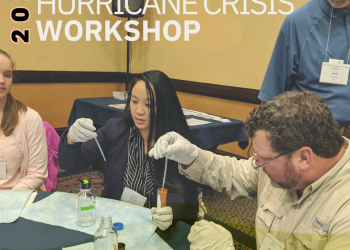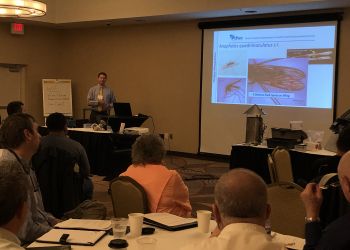Note: This is the fourth edition of NACCHO’s Greener Guidance environmental health advice column. See past columns here. Submit a question here.
November 2018
Dear Greener Guidance,
I am working on revising our local health department cemetery guidelines to include green burials. I wondered if any other health department in the country has any “best practices” and/or reference materials they are able to share. I’m interested in the scientific evidence used to draw conclusions on isolation distances from seasonal ground water table, surface waters, drinking water wells, and soil suitability.
– Buried in Guidelines
Dear Buried,
In 2016, the Calais Cemetery Commission in Vermont worked with end-of-life specialist Michelle Acciavatti to change the state burial depth law to allow for green burials.
Ms. Acciavatti provided the following information:
Most city and state health departments have not taken up the issue of green burial practices because dead bodies aren’t a public or environmental health risk (except in a few very specific cases like when someone dies from Ebola, in which case custody of the body falls to the health department).
The scientific evidence on the safety of bodies and cemeteries has been culled from studies done by the CDC, WHO and other international health groups on mass graves, and from data produced by forensics institutes (so called “body farms”). Many of these finding were complied by the Green Burial Council in a document you can download from their website called “The Science Behind Green Burial.” These studies show that the distance the materials found in decomposing bodies travel is very small.
That said, most green burial practices are “best guesses” based on what works best across soil and habitat types. The best practices include
- covering the body with 10-24″ of soil to create a physical and chemical “smell barrier” that prevents scavengers from disturbing graves;
- burying bodies above the seasonable high water table;
- not burying bodies directly in wetlands or a source of public drinking water;
- not embalming the body;
- using a biodegradable container; and
- following re-wilding principles for caring for the land.
The idea of “soil suitability” is actually a non-issue as all healthy soil is suitable for burial; the soil type may impact the rate of decomposition, but not the process itself. Decomposition is an elegant process between the natural bacteria found in the body’s gut biome and the decomposers (including bacteria, fungi and microorganisms, and insects) found in soil. Green burial is safely practiced in soil that ranges from desert sand to wet clay.
See these additional resources for more information:
- The Baltimore County Department of Environmental Protection and Sustainability released a white paper on Environmental Health Implications of Green Burials. Kevin Koepernick, manager of ground water management, wrote the white paper after Baltimore County Council passed a bill allowing for conservation burial grounds.
- The Massachusetts Department of Environmental Protection has a webpage dedicated to home and green burial information for the use of local boards of health.
- The Delta County Health Department in Colorado has human interment guidelines for private burials, and there is a local ordinance on private burials.
- The Green Burial Council, a nonprofit educating on eco-friendly deathcare, offers dozens of resources for the public and professionals. The council also developed standards for funeral homes, cemeteries, and burial products.
- The World Health Organization published a briefing on The Impact of Cemeteries on the Environment and Public Health, describing the state of knowledge regarding water pollution from cemeteries and the mechanisms operating to ameliorate the pollution potential.
- The Pan American Journal of Public Health published a literature review on infectious disease risks from dead bodies following natural disasters.
- The first chapter of Carcass Disposal: A Comprehensive Review from the National Agricultural Biosecurity Center Consotrium focuses on animal burial. Section 1.3 describes implications to the environment.
If you want an answer to your environmental health question, submit it anonymously here!






